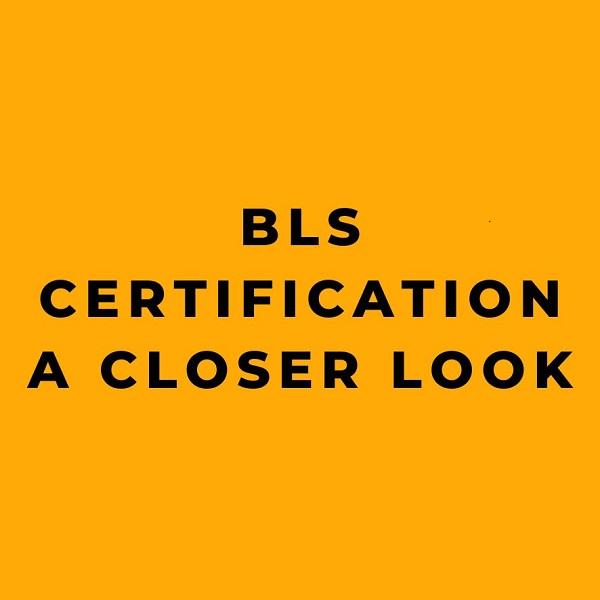BLS certification, which stands for Basic Life Support, is an essential certification for individuals working in the medical field. This certification is crucial for those who need to be prepared to respond to medical emergencies and provide life-saving care to patients. In this comprehensive article, we will take a closer look at the BLS certification process, its significance, and the key differences between BLS and CPR certifications. We will also address common misconceptions and provide valuable insights for individuals seeking BLS recertification.
Understanding the BLS Certification Process
BLS certification is designed to verify that an individual has been sufficiently trained in resuscitation and life support care for individuals suffering from cardiac arrest or respiratory distress. The certification typically includes training in advanced CPR techniques, airway management, and team dynamics. BLS certification is primarily geared towards healthcare professionals, first responders, and individuals working in medical settings such as hospitals, clinics, and ambulance services.
The process of obtaining BLS certification involves attending an accredited BLS class, learning the necessary methods and techniques, and passing a certification test. The certification is usually valid for a certain period, after which individuals are required to recertify in order to maintain their proficiency and stay up to date with the latest guidelines and best practices.
Key Differences Between BLS and CPR Certifications
While BLS and CPR share the common goal of providing assistance to individuals experiencing cardiac or respiratory distress, there are distinct differences between the two certifications.
1. Target Audience:
– CPR certification is designed for laypersons and individuals in non-healthcare professions, equipping them with basic CPR techniques, AED use, and general first aid skills.
– BLS certification, on the other hand, is tailored for healthcare professionals and first responders, providing in-depth training in advanced CPR, airway management, and team dynamics.
2. Depth of Training:
– CPR certification focuses on basic life-saving techniques that can be applied in various non-medical scenarios.
– BLS certification includes CPR training but is more comprehensive and intensive, preparing individuals to handle critical situations with a higher level of care expected in medical environments.
3. Certification Requirements:
– CPR certification typically requires renewal every 2 years, while BLS certification may require renewal every 1 to 2 years, with more frequent updates for healthcare professionals.
Significance of BLS Certification in Healthcare Settings
BLS certification plays a crucial role in healthcare settings where quick and effective life-saving interventions are essential for patient outcomes. Healthcare professionals with BLS certification are equipped to respond to medical emergencies, provide advanced life support measures, and contribute significantly to patient care and safety.
Recertification and Continuing Education
As mentioned earlier, BLS certification is typically valid for a certain period, after which individuals are required to recertify. Recertification ensures that healthcare professionals maintain their proficiency in life-saving techniques, stay updated with the latest guidelines, and continue to provide high-quality care to patients.
Continuing education in BLS is also important to stay abreast of advancements in resuscitation and life support care. Healthcare providers should seek opportunities for ongoing training, simulations, and skill drills to enhance their readiness to respond to emergencies.
Common Misconceptions and Tips for Recertification
There are common misconceptions about BLS recertification, including confusion between BLS and CPR certifications, as well as the belief that BLS certification is only relevant for specific healthcare roles. It’s important to clarify these misconceptions and emphasize the broad applicability and significance of BLS certification in healthcare.
For individuals seeking BLS recertification, here are some tips:
– Stay informed about the recertification requirements and timelines.
– Take advantage of online BLS recertification courses for convenience and flexibility.
– Engage in regular skill drills and simulations to maintain proficiency in BLS techniques.
– Network with peers and participate in discussions to exchange best practices and experiences.
In conclusion, BLS certification is a critical credential for healthcare professionals and first responders, providing them with the necessary skills and knowledge to respond to medical emergencies and save lives. Recertification and continuing education are essential to ensure that individuals maintain their proficiency and readiness in providing life-saving care. By understanding the BLS certification process, differences between BLS and CPR, and debunking common misconceptions, individuals can make informed decisions and take proactive steps towards maintaining their BLS certification.










